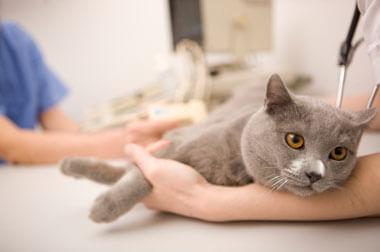
Before a veterinarian can recommend a treatment, her or she must first determine what is causing the symptoms exhibited by the animal. At our in-house veterinary laboratory , a sample of a pet’s blood, urine, and/or feces can reveal an extensive amount of information about what is going on inside your pet’s body.
Laboratory examination of your pet’s blood, feces, or urine can also reveal the start of a condition before your pet exhibits any visible symptoms. Regular pet wellness visits to your veterinarian are a good way to help ensure that pet medical problems are detected and treated before visible symptoms appear. This can save you money and your pet the pain and stress of a disease down the road.
In addition to the examination of blood, urine, and feces samples, we have other non-invasive diagnostic tools that allow us to examine the inside of your pet’s body without surgery. They include digital X-rays and ultrasound technology, both of which provide us with images of the inside of your pet.
Another mildly invasive but non-surgical tool is endoscopy, a procedure that involves inserting a thin tube with a small camera and clipping tool at the end. By inserting this into one of the animal’s orifices, the veterinarian is able to observe, photograph, and, when necessary, cut a small tissue sample for further examination.
With the veterinary diagnostic tools available today, and new ones that are being developed, veterinarians are in a good position to help your dog or cat enjoy a long and healthy life with you.
